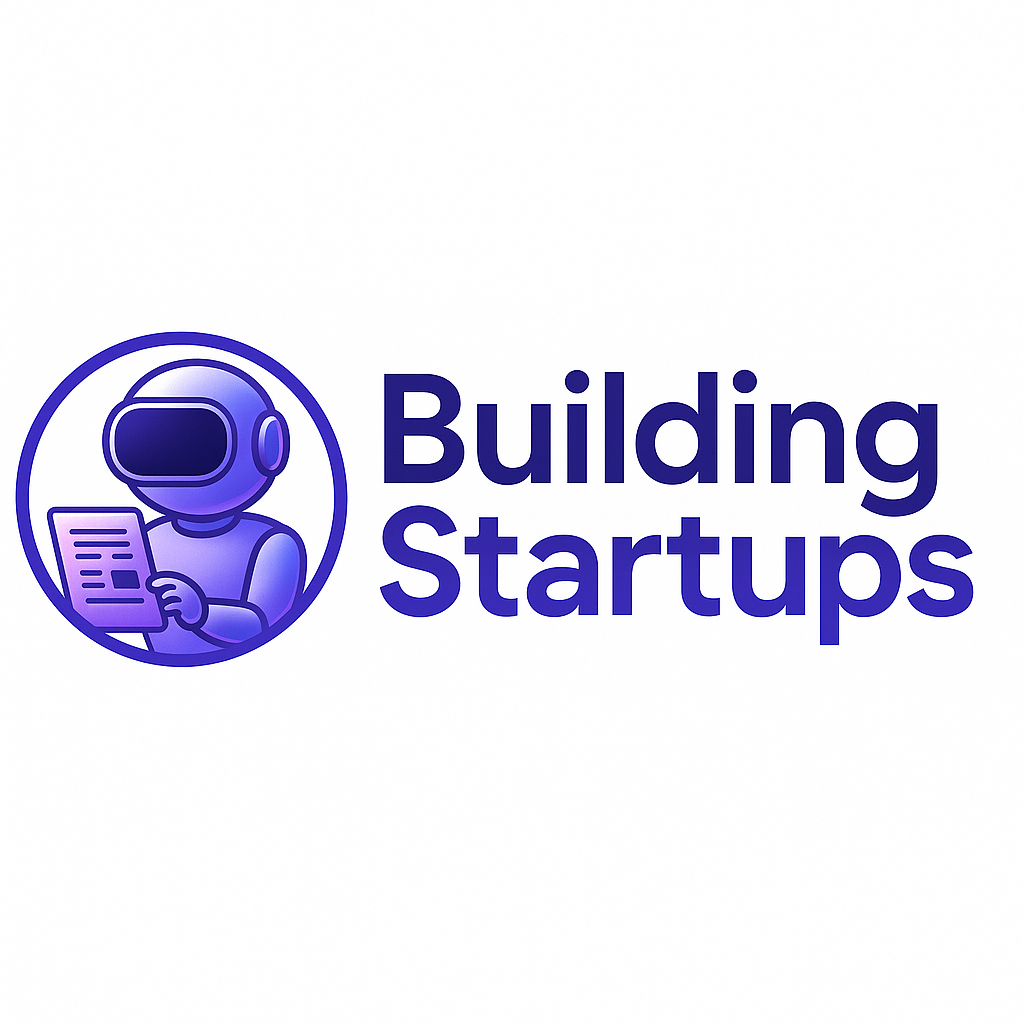Welcome
Hey there Early Stagers…
In this week’s edition we’re diving deep into the heartbeat of startup life and the intricacies of venture funding.
We’re talking about zombie startups and the secret sauce to reviving them, the magic of becoming a learning organization, and the tightrope walk between solving today’s problems and anticipating tomorrow’s challenges. Plus, we’re unpacking the complex dance of funding agreements with a sprinkle of real-world wisdom.
So take a zip of that coffee and let’s dive in…
Yours truly,
Avinoam
Never miss an update
Do you like what you read? Subscribe to our FREE weekly newsletter and join hundreds (soon we’ll get to thousands) of early stage founders just like you trying accelerate their PMF journey
Reviving Zombies

In the fast-paced and competitive world of startups, the emergence of “zombie startups” represents a unique challenge. These are companies that find themselves trapped in a state of neither failing outright nor achieving meaningful growth. They may just cover their operating costs, or worse, slowly bleed resources, yet they linger on. The most deceptive are those that break even, as they can lead founders into a dangerous comfort zone, mistaking survival for success.
But in the high-stakes arena of startups, where the fundamental aim is to deliver rapid growth and substantial returns to investors, such stagnation is particularly problematic. This is because the main purpose of a startup, especially from an investor’s perspective, is to generate significant returns, a goal that zombie startups are conspicuously failing to meet.
The common characteristic is that they are not going to make any return to their investors. so there is always a questions a question about their future.
Something has to be done…
Understanding Zombie Startups
A zombie startup is characterized by its lack of growth and failure to innovate. These businesses are often rigidly attached to their original vision, ignoring market signals that a pivot or evolution is required. This stagnation not only risks the eventual collapse but also represents a missed opportunity for transformation and success.
The Risk of Complacency
For zombie startups, complacency is the hidden danger. Reaching a break-even point might be seen as an achievement, but in a landscape where innovation and growth are paramount, standing still is effectively moving backward. This plateau, while comfortable, detracts from innovation and blinds the company to changing market needs and the potential for disruptive success.
Strategies for Revival
Reviving a zombie startup demands bold, comprehensive strategies. These include new leadership, embracing innovation, and a flexible approach to business strategy. Below are effective revival strategies, now incorporating a critical aspect: creative thinking about the startup’s product or service.
-
Injecting New Blood: Introducing fresh perspectives can be the catalyst for change. New leaders or team members can bring innovative ideas and challenge existing norms, propelling the startup out of stagnation.
-
Embracing Innovation: Innovation must permeate all facets of the business. Whether through new technologies, business models, or a pivot based on market research, innovation is key to breaking free from the zombie state.
-
Reevaluating the Product: A critical look at the product or service can unearth new opportunities. Questions like “What other uses does our product have?” or “what other jobs to be done can this product accomplish?” or “Which other industries or markets could benefit from our product?” can expand the playing field. Further probing with questions such as “How can we modify our product to serve unmet needs in the market?” or “In what unconventional ways can our product be utilized?” encourages creative thinking and could reveal untapped potential.
-
Changing Business Approaches: The strategies that initially propelled the startup may now be its chains. It’s crucial to be open to fundamental changes, whether in marketing, product development, or customer engagement strategies.
-
Customer-Centric Evolution: Evolving based on customer feedback and market demand is essential. Startups must go beyond their assumptions and align with what the market genuinely needs, ready to pivot or iterate based on solid data.
-
Financial Restructuring: For money-losing startups, revising financial management and exploring new revenue streams or funding options with a clear plan for growth is critical.
Conclusion
Zombie startups occupy a precarious position between failure and true success. Escaping this limbo requires a willingness to embrace change, innovate, and rethink the business’s core offerings.
By adopting new perspectives, questioning the versatility of their product, and remaining open to dramatic shifts in strategy, these startups can reignite growth. Transitioning from a zombie state to a dynamic, thriving entity is not merely about survival—it’s about creatively redefining success to meet the relentless demand for returns in the startup ecosystem.
The Key to a Successful Startup is...

In the ever-evolving landscape of the startup ecosystem, the ability to learn and adapt swiftly is not just an advantage but a necessity for survival and success. This reality has given rise to the concept of the learning organization as a critical foundation for startups aiming to navigate the uncertainties of the market with agility and innovation.
At its core, a learning organization is one that has integrated continuous learning, experimentation, and adaptation into its DNA, making it exceptionally equipped to respond to new information, challenges, and opportunities.
This article explores how embedding the principles of a learning organization can unlock the potential for unprecedented growth and success in startups.
The Foundation of a Learning Organization
A learning organization is characterized by its relentless pursuit of knowledge and improvement. It is an entity that encourages, facilitates, and leverages the collective learning of its members to achieve its goals.
In the context of startups, this means creating a culture and infrastructure that supports experimentation, feedback loops, and rapid iteration, all aimed at refining and evolving the business model, product offerings, and market strategies in real-time.
Agility Through Continuous Learning
Startups operate in a landscape of inherent uncertainty. Market conditions, consumer preferences, and competitive dynamics can shift dramatically and without warning. In this environment, the ability to learn and pivot quickly becomes a startup’s most valuable asset.
Learning organizations excel in this regard by institutionalizing the process of gathering data, deriving insights, and translating these learnings into actionable strategies. This agility enables them to outmaneuver competitors and align more closely with their customers’ evolving needs.
Innovation Through Experimentation
At the heart of the learning organization model is the principle of experimentation. By constantly testing hypotheses and validating ideas through experiments, startups can innovate with greater speed and lower risk.
This approach, inspired by the Lean Startup methodology, emphasizes the importance of building a minimum viable product (MVP), gathering feedback, and iterating. Such a culture not only accelerates the innovation process but also fosters a mindset where failure is viewed as a valuable source of learning rather than a setback.
Critical Thinking and Questioning
A defining trait of learning organizations is the emphasis on critical thinking and questioning. Every assumption is challenged, and every process is scrutinized, with the goal of uncovering better ways to serve customers and streamline operations.
This continuous questioning leads to a culture of openness and creativity, where every team member is empowered to contribute ideas and innovations. By prioritizing critical thinking, startups can ensure that they are not just reacting to the market but actively shaping it.
Customer-Centric Evolution
The ultimate aim of a learning organization is to deliver exceptional value to its customers. By maintaining a laser focus on customer needs and feedback, startups can ensure that their products and services are not just meeting but exceeding expectations.
This customer-centric approach is critical in today’s competitive environment, where customer loyalty can be fleeting, and market leadership is contingent on the ability to deliver unique and compelling value propositions.
Putting It All Together
For startups, becoming a learning organization is not just a strategy; it’s a survival imperative. By fostering an environment of continuous learning, experimentation, and adaptation, startups can navigate the complexities of the market with confidence and agility.
The principles of the learning organization offer a roadmap to not only survive but thrive, enabling startups to continuously innovate, meet their customers’ needs, and drive growth. In the fast-paced world of startups, the ability to learn and adapt is indeed the key to success.
Never miss an update
Do you like what you read? Subscribe to our FREE weekly newsletter and join hundreds (soon we’ll get to thousands) of early stage founders just like you trying accelerate their PMF journey
Empowering Founders with Investment Literacy

In the dynamic intersection of innovation and capital, startups find themselves in a dance with investors—a dance where, more often than not, the investors lead. This is largely due to an imbalance in business knowledge, particularly in the intricate details of deal-making.
Founders, brimming with technical prowess and visionary ideas, may find themselves at a disadvantage when negotiating funding agreements, which are complex amalgamations of finance and control mechanisms.
Understanding the mechanics of these agreements is crucial for founders who wish to not only secure investment but also retain influence over their startups’ future direction.
The Dual Nature of Funding Agreements
Funding agreements in the startup world are bifurcated into two primary components: finance and control.
The financial aspect deals with the valuation of the company, the amount of money being invested, and the equity being exchanged.
Control, on the other hand, pertains to the decision-making powers within the company post-investment, including board composition, voting rights, and other governance issues.
Key Terms Founders Must Know
To navigate these agreements successfully, founders must familiarize themselves with several key terms:
Participation: This refers to the right of investors to get back their initial investment plus a share of any remaining proceeds during a liquidity event (e.g., sale or IPO). For example, if an investor has a 1x participating preference on a $1 million investment, they get their $1 million back plus a percentage of the remaining sale proceeds based on their ownership.
Liquidation Preferences: This determines the payout order in the event of a sale. If an investor has a 2x liquidation preference on a $1 million investment, they’re entitled to $2 million before any common shareholders receive proceeds. This protects investors but can significantly dilute founders’ and employees’ payouts in a sale.
Ratchet (Full and Regular): A ratchet adjusts the price at which preferred shares convert to common shares, protecting investors from dilution in future financing rounds. A “full ratchet” gives investors the right to convert at the lowest share price after their investment, while a “weighted average ratchet” adjusts based on the amount of money raised and the share price in new financing rounds.
Veto Rights: Investors may require veto rights over certain decisions, such as raising new financing, changing the business model, or making significant purchases. This can limit founders’ ability to make unilateral decisions.
Preferred vs Common Stock: Preferred stock often comes with additional rights and protections not afforded to common stock, which is typically held by founders and employees. These can include liquidation preferences, dividend rights, and conversion rights.
Drag Along: This clause requires minority shareholders to participate in the sale of a company if a majority of shareholders agree to the deal, ensuring that a few shareholders cannot block a sale beneficial to the majority.
Pro-rata Rights: These rights allow investors to maintain their percentage ownership in future financing rounds by participating proportionally to their current stake.
Board Rights and Responsibilities: Investors may negotiate for seats on the board, giving them influence over strategic decisions. The board’s composition is crucial as it can affect everything from daily operations to the strategic direction of the startup.
The Impact on Founders and Their Startups
Each of these terms can significantly affect the founders’ control over their company and its future trajectory. For instance, excessive liquidation preferences can demotivate founders by reducing their financial upside in a successful exit. Similarly, veto rights can curtail founders’ operational freedom, and unfavorable board compositions can lead to strategic misalignments.
Educating Founders for Equitable Negotiations
The key message for founders is clear: Educate yourself. Understanding the nuances of these investment terms allows founders to negotiate not just for capital but for terms that support their vision and operational autonomy. Resources such as startup accelerators, mentorship programs, and legal counsel can provide invaluable guidance.
Consider a hypothetical scenario where a founder agrees to a deal without fully understanding the implications of full ratchet anti-dilution protection. In a subsequent funding round at a lower valuation, the founder could see their ownership significantly diluted, reducing their share of the eventual exit proceeds and potentially their influence in the company’s direction.
Conversely, a founder well-versed in these terms might negotiate for a weighted average ratchet instead, minimizing their dilution while still providing protection for investors. They might also push for a cap on liquidation preferences to ensure that the founding team and early employees retain a meaningful share of the exit proceeds.
Wrapping up
The imbalance of business knowledge between investors and founders is a navigable challenge. By arming themselves with an understanding of the critical components of funding agreements, founders can level the playing field.
This knowledge not only protects their interests but also ensures that the partnership with investors is built on a foundation of mutual respect and understanding, leading to more sustainable and successful startups.
A Startup's Balancing Act

For early-stage startups, the path from conception to market leader is fraught with challenges that test their resilience, adaptability, and vision. A pivotal challenge is balancing the act of addressing immediate market needs with the foresight to anticipate and adapt to future trends.
This balance is not merely strategic—it’s essential for survival in the competitive ecosystem of startups, where the present’s needs and the future’s possibilities must be navigated with equal attention and innovation.
The Present: Securing Traction and Investment
Startups are engines of innovation, driven to solve current problems in unique and impactful ways. This immediacy is crucial for gaining initial traction, attracting early customers, and securing vital early-stage investments.
Uber stands as a prime example of solving an immediate problem—finding reliable and convenient transportation. By addressing this need, Uber not only gained rapid traction but also revolutionized the taxi industry.
In contrast, Blockbuster, which focused on physical DVD rentals, failed to address the growing demand for digital streaming, a shift capitalized on by Netflix, leading to Blockbuster’s eventual decline.
Another example is Airbnb identified the immediate problem of finding affordable, short-term lodging. By offering a platform for homeowners to rent out their spaces, Airbnb not only solved this problem but also disrupted the traditional hospitality industry.
On the other side of the spectrum, MySpace failed to innovate beyond its initial success as a social networking platform, ultimately losing ground to Facebook, which continuously evolved to meet users’ changing preferences.
The Future: Building a Defensible Position
While addressing current market needs is necessary for gaining initial traction, startups must also look ahead, anticipating market shifts and emerging trends to build a sustainable and defensible position in the market.
Tesla exemplified forward-thinking by not just addressing the immediate demand for electric vehicles but also investing in battery technology and a supercharger network, anticipating the broader shift towards sustainable energy.
In contrast, Kodak, despite inventing the digital camera, failed to anticipate the digital photography revolution, leading to its downfall as it clung to its film-based business model.
Another example is Netflix transitioned from DVD rentals to streaming, foreseeing the shift in consumer preferences towards digital consumption. This pivot allowed Netflix to dominate the entertainment industry, unlike Blockbuster, which could not adapt quickly enough to the digital transition.
Amazon started as an online bookstore but quickly expanded its vision to become “the everything store.” By continuously analyzing and anticipating consumer needs, Amazon has become a global e-commerce leader. Conversely, Sears, once a retail giant, failed to adapt to the online shopping revolution, leading to its decline.
It’s Balancing Act
Achieving a balance between addressing the present and preparing for the future involves strategic planning, continuous innovation, and an agile approach to business development.
i.e. Spotify not only addressed the immediate need for legal music streaming but also anticipated the importance of user experience, investing in personalized playlists and discovery features, unlike Pandora, which struggled to innovate beyond its radio station model.
Google has continuously evolved, expanding from its core search engine to dominate in multiple domains, including Android, YouTube, and cloud services. This contrasts with Yahoo, which failed to capitalize on its early success and adapt to new market trends, leading to its decline.
For startups, the journey to success is a tightrope walk between solving today’s problems and anticipating tomorrow’s opportunities. By understanding and learning from both the triumphs and failures of companies like Uber, Airbnb, Tesla, and Amazon, startups can better navigate the complexities of the market.
This balanced approach—not only meeting current demands but also innovating for the future—is crucial for building a sustainable, defensible, and successful business in the ever-evolving startup landscape.
